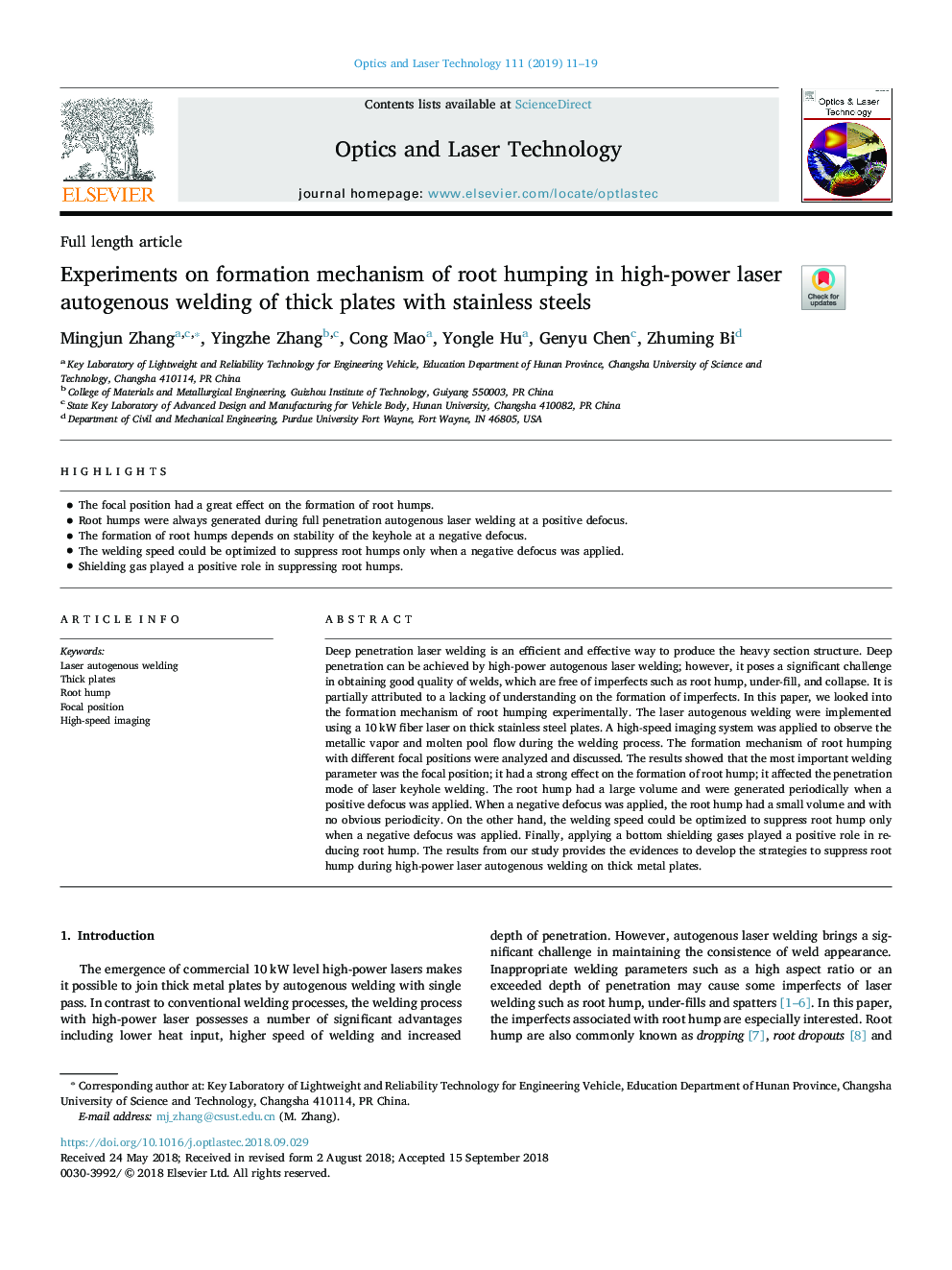| Article ID | Journal | Published Year | Pages | File Type |
|---|---|---|---|---|
| 10226346 | Optics & Laser Technology | 2019 | 9 Pages |
Abstract
Deep penetration laser welding is an efficient and effective way to produce the heavy section structure. Deep penetration can be achieved by high-power autogenous laser welding; however, it poses a significant challenge in obtaining good quality of welds, which are free of imperfects such as root hump, under-fill, and collapse. It is partially attributed to a lacking of understanding on the formation of imperfects. In this paper, we looked into the formation mechanism of root humping experimentally. The laser autogenous welding were implemented using a 10â¯kW fiber laser on thick stainless steel plates. A high-speed imaging system was applied to observe the metallic vapor and molten pool flow during the welding process. The formation mechanism of root humping with different focal positions were analyzed and discussed. The results showed that the most important welding parameter was the focal position; it had a strong effect on the formation of root hump; it affected the penetration mode of laser keyhole welding. The root hump had a large volume and were generated periodically when a positive defocus was applied. When a negative defocus was applied, the root hump had a small volume and with no obvious periodicity. On the other hand, the welding speed could be optimized to suppress root hump only when a negative defocus was applied. Finally, applying a bottom shielding gases played a positive role in reducing root hump. The results from our study provides the evidences to develop the strategies to suppress root hump during high-power laser autogenous welding on thick metal plates.
Related Topics
Physical Sciences and Engineering
Engineering
Electrical and Electronic Engineering
Authors
Mingjun Zhang, Yingzhe Zhang, Cong Mao, Yongle Hu, Genyu Chen, Zhuming Bi,
